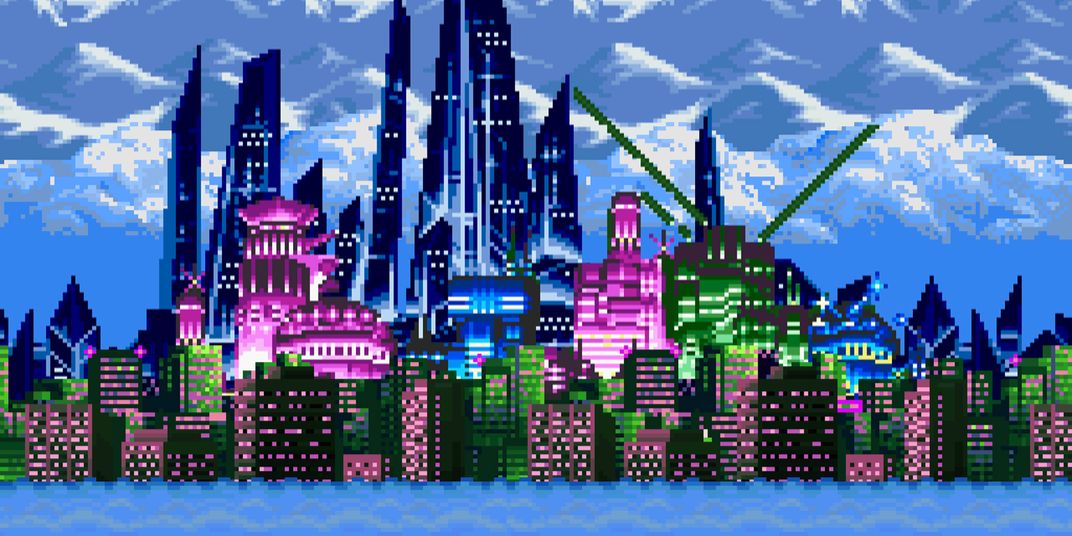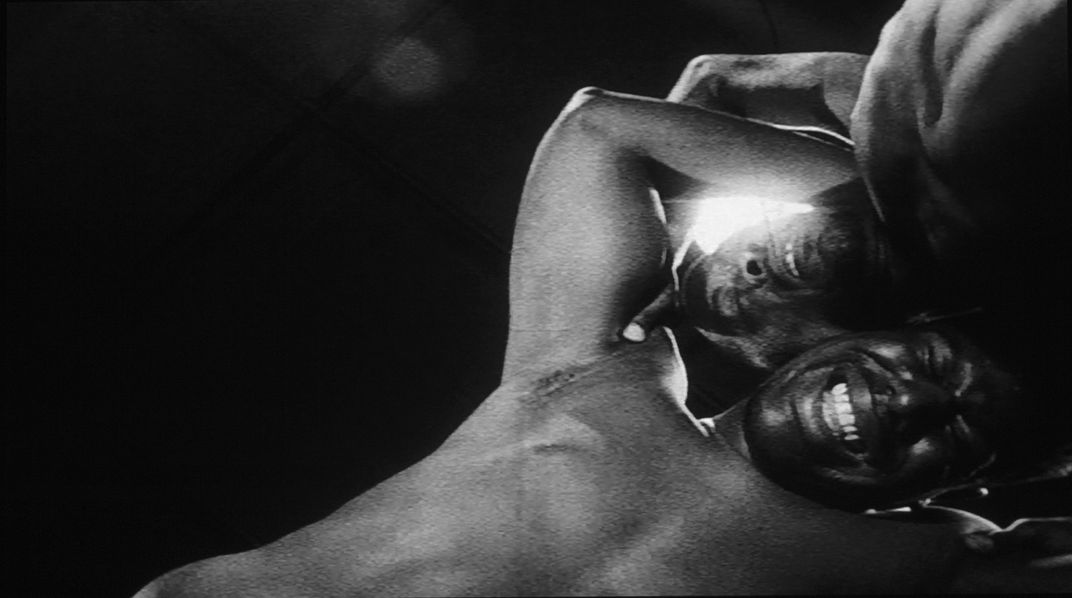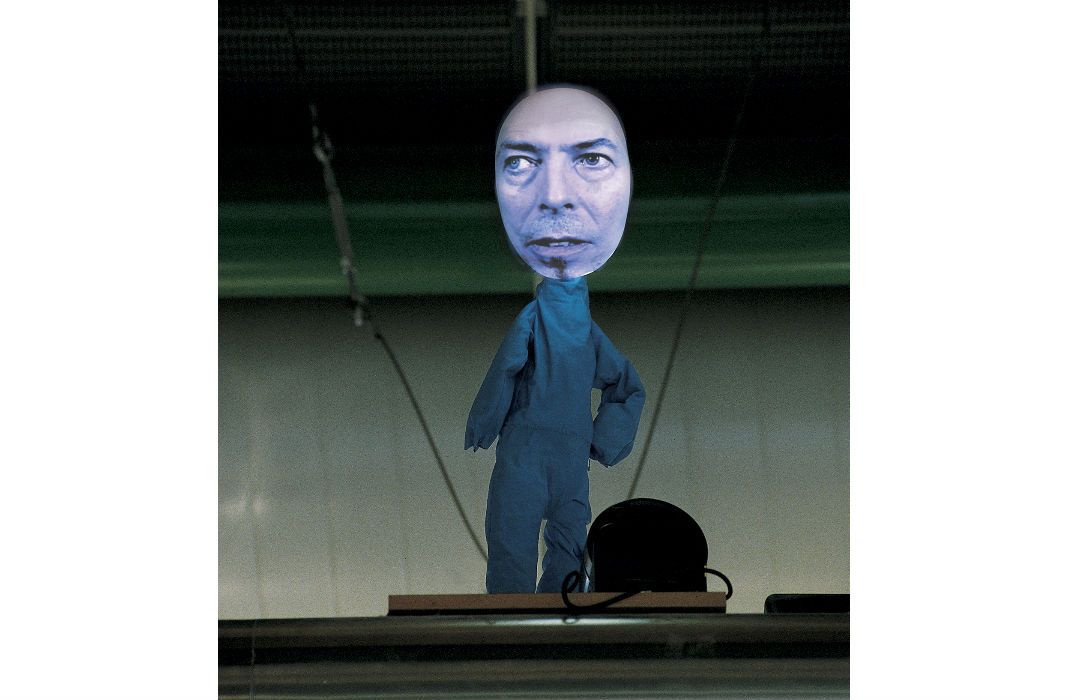A Dream to Remember
At Hirshhorn exhibit, “the cinematic is in the way we perceive the world, in the way we speak, in the way we dream.”
One morning still in a sleep-induced fog, I venture over to the Hirshhorn Museum.
There, I spiral into yet another dream sequence. Sheep, passing by in a herd, beg to be counted and the sight of a man’s chest rising and falling as he sleeps lulls me into synchronizing my own breath with his. Suddenly, I’m barreling around mountains in a train that’s passing through tunnels. Or are those blackouts just my heavy eyelids blinking? I wouldn’t doubt it. Someone’s rattling in a dull monotone from Marcel Proust’s Remembrance of Things Past in the background, and not the part about the madeleine. That part I liked.
Next, I’m off the train and walking through a beam of light bursting through a smoky haze. Yikes! Two men are wrestling in the nude. And, now, a weird creature with the head of David Bowie and the body of a doll appears. Really?
Bowie’s spouting off orders, but I don’t stick around to find out why because King Kong’s Fay Wray is in one of her screaming fits. She’s convulsing as if she’s being exorcised.
Not long after Wray’s screams fade, I’m hopping through some colorful video game world listening to soundtracks of birds chirping and water rushing. I follow a crowd to a light at the end of a tunnel, ride an escalator down a floor, pass through a revolving door and I’m spit out onto the sidewalk.
Was it all a dream? No. It was the museum’s exhibition “The Cinema Effect: Dreams”—a dark labyrinth of 20 film installations that plays out like a highbrow haunted house, and mentally jars my perception of fact and fiction, and dream and reality.
Now my life seems more fiction than fact, a film in the making. Could that street vendor and those guys unloading the truck be part of the plot? I was putty in the curators’ hands, one of whom said, “The cinematic is in the way we perceive the world, in the way we speak, in the way we dream.”
/https://tf-cmsv2-smithsonianmag-media.s3.amazonaws.com/accounts/headshot/megan.png)



/https://tf-cmsv2-smithsonianmag-media.s3.amazonaws.com/accounts/headshot/megan.png)